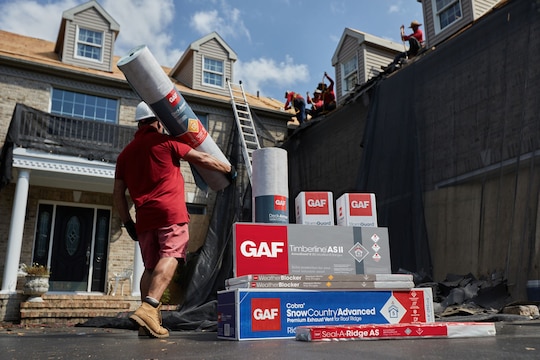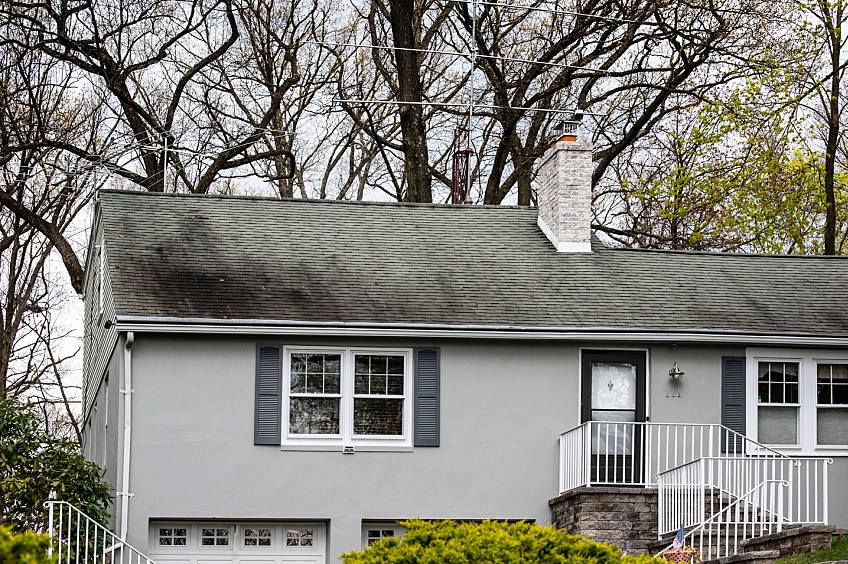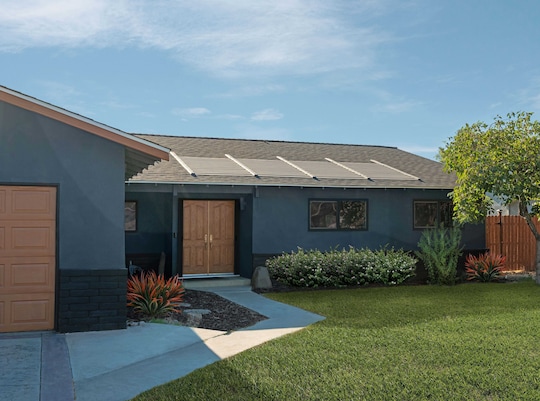
If your home has dark stains on the roof, it may at first glance appear to be a sign of age. However, those spots could actually indicate the presence of blue-green algae growth making your roof look older than it is.
How should you help protect your roof against blue green roof algae discoloration? Roofing materials that contain copper can help.
What Is Blue-Green Algae?
Blue-green algae are a kind of cyanobacteria called Gloeocapsa magma. They travel on the wind and thrive in moist environments such as your roof. Because these algae travel so easily, they can quickly spread across neighborhoods.
Once settled on a roof, they develop a surrounding brownish-black shell to protect against damage from the sun's rays, causing a telltale roof discoloration.
How Does Algae Affect Your Roof?
If you look up toward the roofs in your neighborhood, you'll often see this sign of algae-infestation. Although it does not damage your roof, the stains and discoloration can resemble aging even in newer roofs and may negatively affect the resale value of a home.
How Can You Fight Back against Roof Algae?
For years, copper-coated granules were added to roofs to help prevent blue-green algae growth in areas where it is common. When it rains, the metals leach out onto the roof to protect it from algae growth. However, as time goes by, less copper is released, reducing its effectiveness.
GAF Time-Release Algae-Fighting Technology was developed to deliver algae-fighting copper in a new, more consistent way. Specially engineered capsules are infused within the shingles, with thousands of copper microsites that release copper steadily over time for long-lasting algae-fighting power.
What Are the Benefits of GAF Time-Release Algae-Fighting Technology?
GAF Time-Release Algae-Fighting Technology provides the algae protection homeowners are looking for. In a GAF survey* of 500 homeowners, 87% of respondents thought it was very to extremely important to protect their roof from blue-green algae. 89% also said that warranty length was very to extremely important when purchasing algae protection products. GAF Time-Release Algae-Fighting Technology helps meet these needs, which is why it is used in many of GAF's most popular products, including shingles, ridge caps, and visible starter strips. Its effectiveness allows GAF to offer 25- and 30-year warranties against algae discoloration.
25-Year Limited Warranty Protection
The 25-year StainGuard Plus Algae Protection Limited Warranty** against blue-green algae discoloration is available on some of the most popular products offered by GAF, including:
Timberline® Shingles:
Designer Shingles
Grand Canyon®
Ridge Cap Shingles
Starter Strip Shingles
30-Year Limited Warranty Protection
The GAF 30-year StainGuard Plus PRO™ Algae Protection Limited Warranty*** is available only on Timberline® UHDZ™ Shingles with patent-pending Dual Shadow Line (which creates a sunset shadow effect for extra dimensionality). They have 10% more Time-Release Technology Algae-Fighting Technology than GAF StainGuard Plus™-labeled shingles and are the only shingle that GAF currently offers with a 30-year limited warranty against blue-green algae discoloration.
Help Protect Your Roof for the Long Run
The best way to protect your roof from the effects of blue-green algae is to install products that help prevent it from growing in the first place. If your roof needs protection—and you have questions on the best shingles and warranty coverage for you—contact a local contractor certified by GAF.****
*Based on a 2021 survey commissioned by GAF of 500 homeowners in areas with moderate to high amounts of blue-green algae.
**25-year StainGuard Plus™ Algae Protection Limited Warranty against blue-green algae discoloration is available only on products sold in packages bearing the StainGuard Plus™ logo. See the GAF Shingle & Accessory Limited Warranty for complete coverage and restrictions.
***30-year StainGuard Plus PRO™ Algae Protection Limited Warranty against blue-green algae discoloration is available only on products sold in packages bearing the StainGuard Plus PRO™ logo. See the GAF Shingle & Accessory Limited Warranty for complete coverage and restrictions.
****Contractors enrolled in GAF certification programs are not employees or agents of GAF, and GAF does not control or otherwise supervise these independent businesses. Contractors may receive benefits, such as loyalty rewards points and discounts on marketing tools from GAF for participating in the program and offering GAF enhanced warranties, which require the use of a minimum amount of GAF products.



